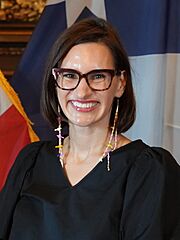Lieutenant Governor of Minnesota facts for kids
Quick facts for kids Lieutenant Governor of Minnesota |
|
|---|---|
| Style |
|
| Seat | Minnesota State Capitol Saint Paul, Minnesota |
| Appointer | General election |
| Term length | Four years, no term limits |
| Constituting instrument | Minnesota Constitution of 1858, Article V |
| Inaugural holder | William Holcombe |
| Formation | May 11, 1858 |
| Succession | First |
| Salary | $82,959 |
| Website | Official page: https://mn.gov/governor/about/peggyflanagan/ |
The lieutenant governor of Minnesota is an important leader in the executive branch of the U.S. state of Minnesota. This person helps the governor run the state. Since Minnesota became a state, fifty different people have served as lieutenant governor. The current lieutenant governor is Peggy Flanagan. She is a member of the DFL Party and is the first Native American person to be elected to a statewide leadership role in Minnesota.
Contents
What Does the Lieutenant Governor Do?
The lieutenant governor helps the governor manage the state's government. If the governor is away or unable to do their job, the lieutenant governor steps in. The governor can also give the lieutenant governor specific tasks or responsibilities.
The lieutenant governor is a key member of the governor's team. They are involved in important decisions about state policies and how the state's money is spent. They also serve on the Executive Council and lead several important committees. These include groups that plan for security at the Capitol building and help preserve the State Capitol.
A Look at the History of the Office
Over time, the role of the lieutenant governor has changed. In 1886, elections for this office moved from odd-numbered years to even-numbered years. Starting with the 1962 election, the term of office increased from two years to four years.
Before the 1974 election, the governor and lieutenant governor were elected separately. The lieutenant governor also had a special role in the state's lawmaking body, the Senate. They used to lead the Senate meetings.
However, since 1974, the lieutenant governor is elected together with the governor as a team. They no longer lead the state Senate. Marlene Johnson, elected in 1982, was the first woman to become lieutenant governor of Minnesota. She ran alongside Rudy Perpich. Since her time, all eight people who have held the office after her have also been women.
Past Lieutenant Governors
Here is a list of some of the people who have served as Lieutenant Governor of Minnesota.
- Parties
Democratic Democratic–Farmer–Labor Farmer–Labor Republican/Independent Republican Reform/Independence
| No. | Image | Lt. Governor | Took office | Left office | Governor(s) served under | Party |
|---|---|---|---|---|---|---|
| 1 | 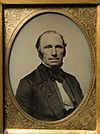 |
William Holcombe | May 24, 1858 | January 2, 1860 | Henry H. Sibley | Democratic |
| 2 | 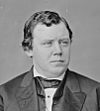 |
Ignatius L. Donnelly | January 2, 1860 | March 4, 1863 | Alexander Ramsey | Republican |
| 3 | 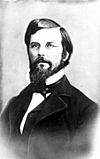 |
Henry Adoniram Swift | March 4, 1863 | July 10, 1863 | Alexander Ramsey | Republican |
| Office vacant from July 10, 1863 – January 11, 1864 | ||||||
| 4 |  |
Charles D. Sherwood | January 11, 1864 | January 8, 1866 | Stephen Miller | Republican |
| 5 | 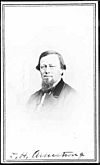 |
Thomas H. Armstrong | January 8, 1866 | January 7, 1870 | William R. Marshall | Republican |
| 6 | 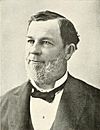 |
William H. Yale | January 7, 1870 | January 9, 1874 | Horace Austin | Republican |
| 7 |  |
Alphonso Barto | January 9, 1874 | January 7, 1876 | Cushman K. Davis | Republican |
| 8 | 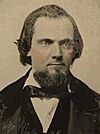 |
James Wakefield | January 7, 1876 | January 10, 1880 | John S. Pillsbury | Republican |
| 9 | 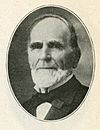 |
Charles A. Gilman | January 10, 1880 | January 4, 1887 | John S. Pillsbury Lucius F. Hubbard |
Republican |
| 10 | 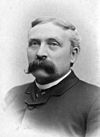 |
Albert E. Rice | January 4, 1887 | January 5, 1891 | Andrew R. McGill William R. Merriam |
Republican |
| 11 | 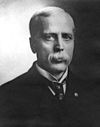 |
Gideon S. Ives | January 5, 1891 | January 3, 1893 | William R. Merriam Knute Nelson |
Republican |
| 12 | 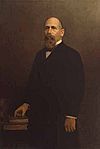 |
David Marston Clough | January 3, 1893 | January 31, 1895 | Knute Nelson | Republican |
| 13 | 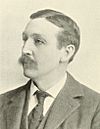 |
Frank A. Day | January 31, 1895 | January 5, 1897 | David M. Clough | Republican |
| 14 | 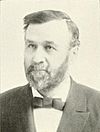 |
John L. Gibbs | January 5, 1897 | January 3, 1899 | David M. Clough | Republican |
| 15 | 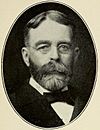 |
Lyndon Ambrose Smith | January 3, 1899 | January 5, 1903 | John Lind (Democratic) Samuel R. Van Sant (Republican) |
Republican |
| 16 | 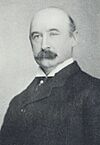 |
Ray W. Jones | January 5, 1903 | January 7, 1907 | Samuel R. Van Sant John A. Johnson |
Republican |
| 17 |  |
Adolph Olson Eberhart | January 7, 1907 | September 21, 1909 | John A. Johnson (Democratic) | Republican |
| 18 | 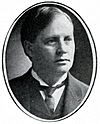 |
Edward Everett Smith | September 25, 1909 | January 3, 1911 | Adolph O. Eberhart | Republican |
| 19 |  |
Samuel Y. Gordon | January 3, 1911 | January 7, 1913 | Adolph O. Eberhart | Republican |
| 20 | 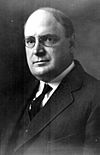 |
Joseph A. A. Burnquist | January 7, 1913 | December 30, 1915 | Adolph O. Eberhart Winfield S. Hammond |
Republican |
| Office vacant from December 30, 1915 – October 28, 1916 | ||||||
| 21 | 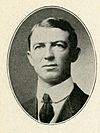 |
George H. Sullivan | October 28, 1916 | January 2, 1917 | J. A. A. Burnquist | Republican |
| 22 | 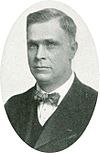 |
Thomas Frankson | January 2, 1917 | January 4, 1921 | J. A. A. Burnquist | Republican |
| 23 | 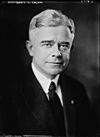 |
Louis L. Collins | January 4, 1921 | January 6, 1925 | J. A. O. Preus | Republican |
| 24 | 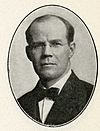 |
William I. Nolan | January 6, 1925 | June 1929 | Theodore Christianson | Republican |
| 25 | 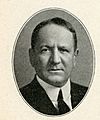 |
Charles Edward Adams | June 25, 1929 | January 6, 1931 | Theodore Christianson | Republican |
| 26 | 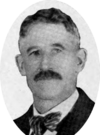 |
Henry M. Arens | January 6, 1931 | January 3, 1933 | Floyd B. Olson | Farmer–Labor |
| 27 | 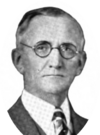 |
Konrad K. Solberg | January 3, 1933 | January 8, 1935 | Floyd B. Olson | Farmer–Labor |
| 28 | 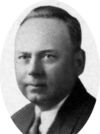 |
Hjalmar Petersen | January 8, 1935 | August 24, 1936 | Floyd B. Olson | Farmer–Labor |
| * | 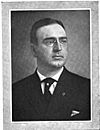 |
William B. Richardson1 | August 24, 1936 | January 1, 1937 | Hjalmar Petersen | Republican |
| 29 | 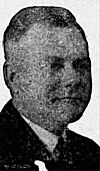 |
Gottfrid Lindsten | January 5, 1937 | January 2, 1939 | Elmer A. Benson | Farmer–Labor |
| 30 |  |
C. Elmer Anderson | January 2, 1939 | January 4, 1943 | Harold Stassen | Republican |
| 31 |  |
Edward John Thye | January 4, 1943 | April 27, 1943 | Harold Stassen | Republican |
| 32 | Archie H. Miller | May 6, 1943 | January 2, 1945 | Edward John Thye | Republican | |
| 33 |  |
C. Elmer Anderson | January 2, 1945 | September 27, 1951 | Luther W. Youngdahl | Republican |
| Office vacant from September 27, 1951 – January 5, 1953 | ||||||
| 34 |  |
Ancher Nelsen | January 5, 1953 | May 1, 1953 | C. Elmer Anderson | Republican |
| Office vacant from May 1, 1953 – September 3, 1954 | ||||||
| 35 | Donald O. Wright2 | September 3, 1954 | January 3, 1955 | C. Elmer Anderson | Republican | |
| 36 | 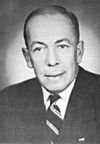 |
Karl Rolvaag | January 3, 1955 | January 8, 1963 | Orville L. Freeman Elmer L. Andersen |
Democratic–Farmer–Labor |
| 37 | 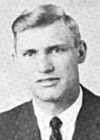 |
Alexander M. Keith | January 8, 1963 | January 2, 1967 | Elmer L. Andersen Karl F. Rolvaag |
Democratic–Farmer–Labor |
| 38 | James B. Goetz | January 2, 1967 | January 4, 1971 | Harold LeVander | Republican | |
| 39 | 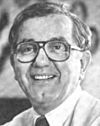 |
Rudy Perpich | January 4, 1971 | December 29, 1976 | Wendell R. Anderson | Democratic–Farmer–Labor |
| 40 | 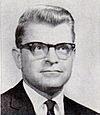 |
Alec G. Olson3 | December 29, 1976 | January 4, 1979 | Rudy Perpich | Democratic–Farmer–Labor |
| 41 | 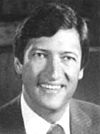 |
Lou Wangberg | January 4, 1979 | January 3, 1983 | Al Quie | Independent Republican |
| 42 | 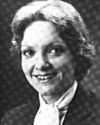 |
Marlene Johnson | January 3, 1983 | January 7, 1991 | Rudy Perpich | Democratic–Farmer–Labor |
| 43 | Joanell Dyrstad | January 7, 1991 | January 3, 1995 | Arne H. Carlson | Independent Republican | |
| 44 | Joanne Benson | January 3, 1995 | January 4, 1999 | Arne H. Carlson | IR/Republican | |
| 45 | Mae Schunk | January 4, 1999 | January 6, 2003 | Jesse Ventura | Reform/Independence | |
| 46 |  |
Carol Molnau | January 6, 2003 | January 3, 2011 | Tim Pawlenty | Republican |
| 47 | 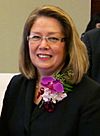 |
Yvonne Prettner Solon | January 3, 2011 | January 5, 2015 | Mark Dayton | Democratic–Farmer–Labor |
| 48 | 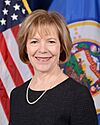 |
Tina Smith | January 5, 2015 | January 2, 2018 | Democratic–Farmer–Labor | |
| 49 |  |
Michelle Fischbach4 | January 2, 2018 | January 7, 2019 | Republican | |
| 50 | 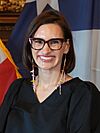 |
Peggy Flanagan | January 7, 2019 | Incumbent | Tim Walz | Democratic–Farmer–Labor |
1 Richardson was actually president pro tem of the Minnesota Senate; became acting lieutenant governor when lieutenant governor Hjalmar Petersen became governor on the death of Floyd B. Olson, but Richardson was never sworn in.
2 Wright was president pro tem of the Minnesota Senate and assumed the office of lieutenant governor in 1954 after Lieutenant Governor Ancher Nelsen resigned to become administrator of the Rural Electric Administration.
3 As president of the Minnesota Senate, Olson assumed office of lieutenant governor when Rudy Perpich, then lieutenant governor, became governor on the resignation of Wendell Anderson; Anderson arranged with Perpich to be appointed to the United States Senate after the resignation of Walter Mondale, who had been elected vice president.
4 As president of the Minnesota Senate, Fischbach became lieutenant governor following the resignation of Tina Smith. Smith was appointed by Governor Mark Dayton to fill the United States Senate seat vacated by Al Franken. Fischbach resigned from the state Senate and took the oath of office for lieutenant governor on May 25, 2018.
Understanding Minnesota Political Parties
Political parties in Minnesota have changed their names over the years. Here's a quick guide:
- Minnesota Democratic–Farmer–Labor Party (DFL): This party was formed on April 15, 1944. It happened when the Minnesota Democratic Party and the Minnesota Farmer–Labor Party joined together. The DFL Party is connected to the national Democratic Party.
- Republican Party of Minnesota: From November 15, 1975, to September 23, 1995, this party was called the Independent Republican party (IR). It has always been connected to the national Republican Party.
- Independence Party of Minnesota: This party started in 1992. In 1995, it joined with the national Reform Party and changed its name to the Reform Party of Minnesota. In 2000, it separated from the national Reform party and went back to being called the Independence Party.
See Also


